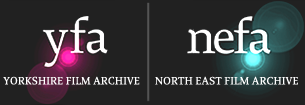York Youth Orchestra Perform to Archive Film
We were pleased to work with York Youth Orchestra, providing archive footage for their Music and Film project which culminated in a public concert on Sunday 19th March.
The films focused on the themes of Industry, Wildlife, Rural and Coast and three composers were asked to respond to the footage, before it was played by the youth orchestra in front of an audience.
We spoke to two of the composers about their experience of working with the nature-themed archive film to compose their work. Read the full interviews below.
David Lancaster
Have you worked with archive film before?
Not in this way, but I have previously composed several pieces of music for silent film with live musical accompaniment, and (in my work as Associate Professor of Composition at York St John University) have supervised students who have composed music for films directly drawn from the YFA/NEFA. It is wonderful to have this opportunity to collaborate, and I hope it won't be the last!
How did you find the process and what was your methods in creating the composition?
I spent some time watching the film, over and over again, to help me to understand its subjects, moods and tones, but also its underlying rhythm and the pacing of the edits. I then felt able to sketch out some musical material, and because I was composing music for the 'Industry' film my thoughts turned to mechanical, repetitive music which can sound quite relentless, but there's a human element too.
Owing to pressures of other deadlines I was working quite quickly, and from the start of December I tried to compose a minute of music every day - which is a significant challenge when completing a large orchestral score - but it meant that there was time left after Christmas to edit the score and try to make it as good as it could be.
Composing on computer - using a music notation programme - allows me to see the film as I am working, and to synchronise the score note-by-note with the moving images, so I spent a lot of time re-winding and playing back the music with the film, to make sure that the sounds complemented the images as I had intended.
Every composition starts in a different place: sometimes it is initiated by a musical idea but it could equally begin with a title, a structure, a theme from visual art or literature, or a sense of where the first performance will take place. In this case the process began with the film, which provided lots of ideas, a fixed duration and a clear sense of theme and structure, which made the composer's job slightly easier!
The footage selected is from our Nature Matters project, which is looking at film through an environmental lens. How did you respond to the environmental elements of the film within your composition?
I grew up in a town of coal mines, factories and cotton mills so many of these images resonated very strongly with me. They were the sights of my childhood, but there is nothing nostalgic in my score: I tried to capture in music not only the relentless repetition of machines, but also to lend a darker quality to some of the images, which (at the time they were shot) may have been attempting to portray a utopian vision driven by unlimited access to energy, with little or no awareness of the impact on the environment.
Find out more about David and his work: www.davidcomposer.com
Nick Williams
Have you worked with archive film before?
Yes, as part of a project with Holmfirth Film Festival and Huddersfield University. I composed some music for a couple of very early shorts; one was a film of the New York subway tunnels with the camera attached to the front of a train, and the other a comedy/experimental film of a building being constructed in fast motion, then at the midpoint the film reversed the process and the building was deconstructed. I wrote the music using pretty primitive technology – all I had was a stopwatch for timings.
How did you find the process and what were your methods in creating the composition?
For this project, I used pretty much the same primitive approach – stopwatch and pencil and paper for working out how many beats at what speed were needed for each section. I enjoyed working that way – I felt it was quite liberating to not rely on specialist technology. I’ve known professional film composers and have nothing but respect for their craft but not being trained in it (or the technology available to film composers) myself I was quite happy to use a similar approach (I suspect) to early composed film scores (e.g. Satie for Cinema in 1924 and Saint-Saëns in 1908).
In terms of putting the score together, there are points of contact between film and the way I compose – montage, juxtapositions, cutting between sections/scenes so I felt very comfortable approaching the composition of the music from a structural point of view.
Writing music to follow specific narratives/storylines and the whole mickey-mousing aspect of film music don’t really interest me so the way the film was structured in blocks of footage fitted my way of composing perfectly. I don’t often write a piece from beginning to end, but a section at a time which I’ll then edit together, though I always have an idea of where each section should go in the overall shape of the piece.
The footage selected is from our Nature Matters project, which is looking at film through an environmental lens. How did you respond to the environmental elements of the film with your composition?
I looked for an underlying structure to the way the rural footage was put together, and it seemed that there was a seasonal shape to the film. That immediately suggested Vivaldi’s Four Seasons, so I used bits of that as a frame to hang my own music on. I threw in a little reference to Beethoven’s Sixth Symphony (the ‘pastoral’) too. It’s not important that people get the references – I hope what I’ve done with them works as music in its own right – but it maybe adds an extra layer to the music. There’s a nostalgic element to some of the footage, and I tried to reflect that in the character of some of the music (without reverting to pastiche).
Towards the end there are some scenes of tree felling and quarrying which contrast with other scenes of rural activity, so the music stands out from the rest of the score at that point. As I said, I’m not interested in mickey-mousing, so the music acts as a sort of aural ‘scenery’ against which the images happen. I’ve lived in Yorkshire since my late teens and feel a close connection to the variety of landscapes and environments that Yorkshire offers. I don’t consciously ‘express’ my feelings about the landscape but I think there are certain qualities in the music that could reflect aspects of what might be thought of as Yorkshireness.
Find out more about Nick and his work: www.williamsmusic.co.uk

